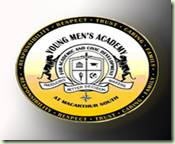By: Janis Klein-Young, MacArthur South & Robyn Stegman, Learn and Serve – Michigan AmeriCorps*VISTA
 Recently I came across an amazing school in Florida: MacArthur South, an alternative school and service-learning academy. Many of the students of MacArthur South have committed serious criminal offences such as fighting, substance abuse, gang activity, and truancy. They enter the school impulsive, aggressive, and hostile with failing test scores and serious attendance problems.
Recently I came across an amazing school in Florida: MacArthur South, an alternative school and service-learning academy. Many of the students of MacArthur South have committed serious criminal offences such as fighting, substance abuse, gang activity, and truancy. They enter the school impulsive, aggressive, and hostile with failing test scores and serious attendance problems.
MacArthur South is located in Homestead, Florida, a community that has seen many troubles. The youth of Homestead make up for 75 percent of the crime rate, a result of their struggle with substance abuse and gang violence. Sixty percent of students drop out of Homestead’s schools, which ranks far below others in academic performance.
In 2005 MacArthur South was selected to totally restructure its curriculum under the districts “Secondary School Reform” initiative. The school decided to expand their pre-developed arts-based service-learning program and transform the entire school into an alternative high school emphasizing service-learning.
In one program students attend weekly workshops with local artists-in-residence who teach them South and Central American indigenous art techniques. They learn sculpting, painting, quilting, pottery, and more. These students become responsible for keeping these dying art forms alive.
The students revitalize their community with these skills. Their artwork is used to revitalize their abandoned downtown district. The body of work of these young people reflects profound statements about social change, legacy, and cultural enrichment. Their work has become a catalyst for Homestead’s resurgence. It has stimulated tourism, employment opportunities, and economic development.
Throughout the year these students teach these vanishing techniques, as well as create their own original artworks that inspire others to pick up these art forms. The students conduct workshops in homeless shelters, special education schools, hospitals, and assisted living facilities to help people with brain injuries, mental illness, and disabilities.
Other MacArthur South classes also work with local partners. Spanish classes read a local Hispanic newspaper to the elderly. The Language Arts classes read books to the local individuals and interview and help write their biographies to share in the school newspaper. The culinary arts class has opened an intergenerational café after being trained by a nationalist to provide age-appropriate food to the elderly. Science classes raised a travelling amphibian petting zoo to bring to each center. Math classes plan and sew quilts, build kites, and play interactive math games designed and built by the woodshop class. Physical education students conduct adaptive exercise classes for immobilized partners at the park. Horticulture students plant a campus butterfly garden. Art students have constructed a ceramic butterfly mural alongside the garden where all students can spend time reflecting in their service-learning personal diaries.
The students integrate lessons learned with art into lessons learned at school. The student’s have been shown to have higher grades, better test scores, and improved behavior. A fewer number of students in this program drop out. These students are changing the way the community perceives its youth by changing the way they see themselves.


